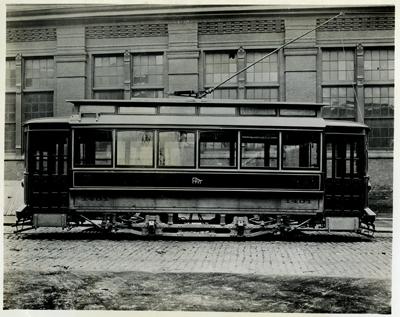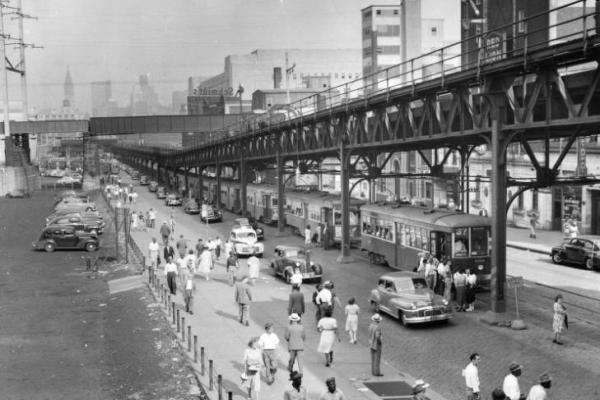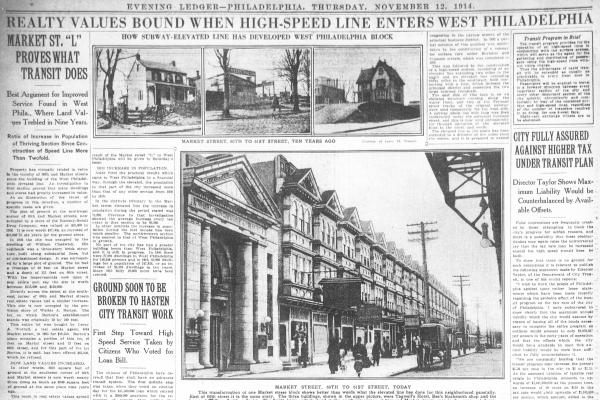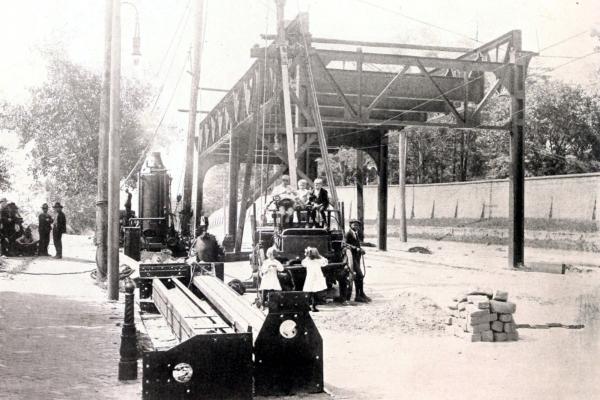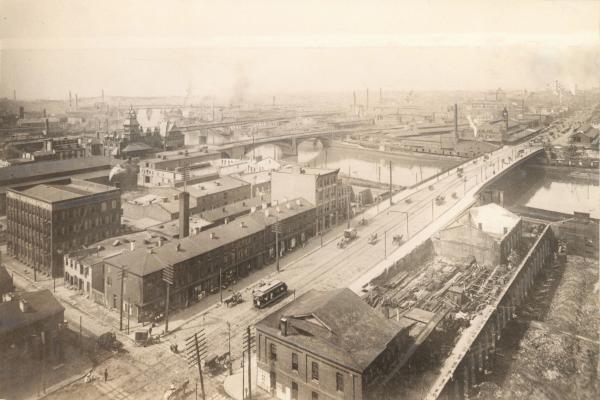Electric Streetcars and The Philadelphia Rapid Transit Company
At the turn of the last century, the privately formed Philadelphia Rapid Transit Company contracted with the city to build and operate the electrified Market Street Elevated (“The El”), with a component designated for West Philadelphia.
In the 1890s, electrified trolley lines operated by independent companies displaced horsecars and cable cars as the city’s mode of public transportation. In 1902 the privately formed Philadelphia Rapid Transit Company (PRT) gained control of the independents, setting the stage for the PRT’s 1903 contract with the city to build and operate the Market Street Elevated (“The El”), with a component designated for West Philadelphia.
Until the late 19th century, Philadelphians relied on horsecar trolleys to move about the city. In 1885 the Philadelphia Traction Company, responding to public demand for a faster, more efficient (i.e., mechanized) mode of transportation, installed a cable car line on Market Street. Several other lines followed, though cable cars were not widely adopted in the city. In the early 1890s, several independent companies experimented unsuccessfully with storage battery cars. After 1892, following the lead of the Philadelphia Traction Company, the city’s independent transportation companies outfitted their lines with overhead electricity wires for trolleys. By 1897, electric trolleys had completely displaced horsecars and cable cars.[1]
Consolidation of the city’s independent transportation companies, including the Philadelphia Traction Company, resulted thorough various acquisitions and mergers in the creation of the Philadelphia Rapid Transit Company (PRT).
The PRT was a holding company formed by Peter A.B. Widener and William Elkins in 1902. Widener and Elkins had checkered careers before becoming traction moguls. Widener was a butcher, Civil War meat mogul, Philadelphia politician, and real-estate investor. Elkins was a refrigerated-grocery magnate, oil refiner, and investor in gas-illuminating firms. Mechanized traction turned out to be their true calling. The PRT was massively successful.
Though an 1857 ordinance authorized the city to municipalize public transportation within its boundaries, the city’s political leaders, during the 1890s electrification binge, opted to vest ownership and operation of the system in private enterprise. Thus, Widener and Elkins had wide latitude to forge the consolidations that became the PRT.[2]
In 1903, Philadelphia’s City Councils (there were two Councils in this era) gave their approval to the PRT to build the Market Street Elevated ("The El"), with the proviso that the tracks east of the Schuylkill River would be routed underground. The overall project would be known as the Market Street Subway and Elevated.
In 1907, the PRT and the city negotiated a contract giving PRT management of all transit lines and their construction. This contract secured PRT’s monopoly and provided the city with regulatory authority and profit-sharing in the operation of the rapid transit system. Under the contract, the city would:
- hold three seats on the board of directors,
- receive half of the system’s profits after the shareholders were paid,
- have the option to purchase PRT properties after 50 years,
- have auditing rights and approval rights for leases and mergers,
- and be responsible for snow removal and street paving along the transit lines.
Public control of the system created by the PRT would not happen until the 1960s.[3]

